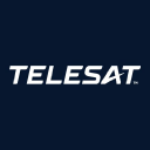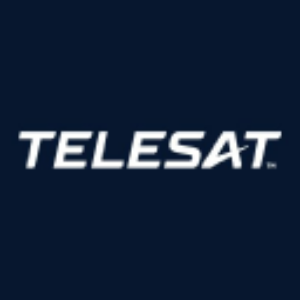Welcome to our dedicated page for TELESAT news (Ticker: TSAT), a resource for investors and traders seeking the latest updates and insights on TELESAT stock.
Telesat Corp (TSAT) is a global leader in satellite communications, providing mission-critical connectivity solutions across broadcast, enterprise, and government sectors. This page serves as the definitive source for official news and updates directly from Telesat and trusted industry sources.
Investors and stakeholders will find curated announcements including quarterly earnings, technology developments like the Telesat Lightspeed LEO network, and strategic partnerships shaping the future of global connectivity. Our collection spans operational updates, regulatory milestones, and service expansions essential for informed decision-making.
All content is rigorously verified to ensure accuracy, with a focus on Telesat’s core operations in satellite fleet management, government contracts, and next-generation broadband solutions. Bookmark this page to track the company’s progress in advancing reliable communications infrastructure across remote and demanding environments worldwide.
Telesat (NASDAQ/TSX: TSAT) and Arab Satellite Communications Organization (Arabsat) have signed a Term Sheet for multi-Gbps capacity of Telesat Lightspeed connectivity services. The agreement, signed at CABSAT 2025 in Dubai, follows their 2024 MoU and establishes a framework for Arabsat to integrate Telesat Lightspeed LEO services into its multi-orbit satellite ecosystem. The partnership will provide broadband connectivity solutions for enterprise, telecom, government, and mobility sectors, featuring Committed Information Rates (CIRs) and Service Level Agreements (SLAs). The companies expect to finalize definitive agreements by December 2025.
Telesat (Nasdaq and TSX: TSAT) has announced its upcoming first quarter 2025 earnings conference call, scheduled for Tuesday, May 6, 2025, at 10:30 a.m. EDT. The call will be led by Daniel S. Goldberg, President and CEO, and Andrew Browne, CFO.
Participants can join through multiple channels:
- Toll-free number (North America): +1-800-952-5114
- International number: +1-416-406-0743
- Access code: 5237299#
A webcast option is available at the provided link for listen-only access. Financial results will be posted on Telesat's website under the Investors section before the call. A replay will be accessible for two weeks until May 20, 2025, via phone (+1-800-408-3053 for North America, +1-905-694-9451 for international) using access code 3089004#.
Telesat Government Solutions, a subsidiary of Telesat (Nasdaq and TSX: TSAT), has appointed Ronald Thompson Jr. as Vice President of Government Solutions Growth. Thompson, a retired U.S. Air Force Colonel with 26 years of service, will serve as chief growth officer leading business development strategies for the Telesat Lightspeed Low Earth Orbit (LEO) satellite network.
Thompson brings nearly four decades of experience, including recent roles as VP of Business Development at LinQuest Corp and senior positions at Raytheon Intelligence & Space, SSL Federal, and other industry leaders. His appointment aims to expand government user adoption of Telesat's LEO SATCOM solutions across military, intelligence, and civil agencies.
Chuck Cynamon, President of Telesat Government Solutions, highlighted Thompson's expertise in delivering mission-critical solutions to government partners. Thompson expressed commitment to advancing the adoption of strategic communication systems among U.S. government and Allies.
Telesat (TSAT) has secured a significant multi-year contract with Viasat Inc. for its Telesat Lightspeed Low Earth Orbit (LEO) services. Viasat will integrate Telesat Lightspeed into its services portfolio for aviation, maritime, enterprise, and defense markets.
The thousands of aircraft equipped with Viasat GM-40 antennas will be able to access the Telesat Lightspeed network when global services launch in late 2027. The system will provide high-speed, low-latency broadband globally, including polar regions, with enterprise-grade Service Level Agreements (SLAs).
The network features advanced cybersecurity standards with Zero-Trust Network Access architecture and is built to telecom Carrier Ethernet standards for seamless integration.
Telesat (NASDAQ/TSX: TSAT) reported its financial results for Q4 and FY2024, showing significant challenges ahead. Revenue for 2024 declined 19% to C$571 million, while Adjusted EBITDA decreased 28% to C$384 million. The company posted a net loss of C$302 million for 2024.
Key developments include securing C$2.54 billion in loan financing from Canadian and Quebec governments for the Telesat Lightspeed LEO satellite program, and successful completion of its Preliminary Design Review. The company maintains a GEO backlog of C$1.1 billion with 72% fleet utilization.
For 2025, Telesat projects revenue between C$405-425 million and Adjusted EBITDA of C$170-190 million, representing a 53% decline at midpoint. This outlook reflects reduced revenues from North American DTH customers, maritime markets, and increased LEO operating expenses. CFO Andrew Browne announced plans to retire later in 2025.
Telesat (NASDAQ/TSX: TSAT) and ADN Telecom have entered into a multi-year partnership agreement to deliver Telesat Lightspeed low earth orbit (LEO) connectivity solutions across Bangladesh and South Asia. The partnership will enable ADN Telecom to leverage Telesat's Smart Virtual Network Operator capability to provide connectivity solutions for enterprise, maritime, and government customers.
The fully funded Telesat Lightspeed constellation will begin satellite launches in the second half of 2026, with ADN Telecom commencing full-time services in late 2027. The service will feature industry-leading committed information rates and guaranteed SLAs. ADN Telecom will participate in early field trial testing of the services.
The MEF 3.0 standards-based LEO services will integrate with ADN's terrestrial network to expand their service reach in Bangladesh and internationally. Both companies will collaborate to secure local regulatory approvals for Telesat Lightspeed services in Bangladesh.
Telesat (NASDAQ and TSX: TSAT), a leading satellite operator, has announced its upcoming fourth quarter and full year 2024 earnings conference call scheduled for March 27, 2025, at 10:30 a.m. EDT. The call will feature President and CEO Daniel S. Goldberg and CFO Andrew Browne discussing the company's financial results for the three and twelve-month periods ended December 31, 2024.
Financial results will be released on Telesat's website prior to the call. Investors can participate via toll-free number (+1 800 952 5114) or international dial-in (+1 416 406 0743) using access code 1687079#. A webcast option is available, and a replay will be accessible until April 10, 2025.
Telesat (NASDAQ and TSX: TSAT) and Space Norway have signed a Term Sheet for Telesat Lightspeed Low Earth Orbit (LEO) connectivity services. Space Norway will integrate a multi-Gbps Telesat Lightspeed capacity pool to provide secure, low-latency connectivity for defense, enterprise, maritime and land customers.
The agreement features Committed Information Rates (CIR) and Service Level Agreement (SLA), offering Space Norway flexibility to customize service offerings and modify online services through their infrastructure. The Telesat Lightspeed network, built with Zero-Trust Architecture and strict cybersecurity standards, will provide resilient communications throughout the Arctic region and EMEA.
The parties anticipate finalizing definitive agreements by the second half of 2025.


